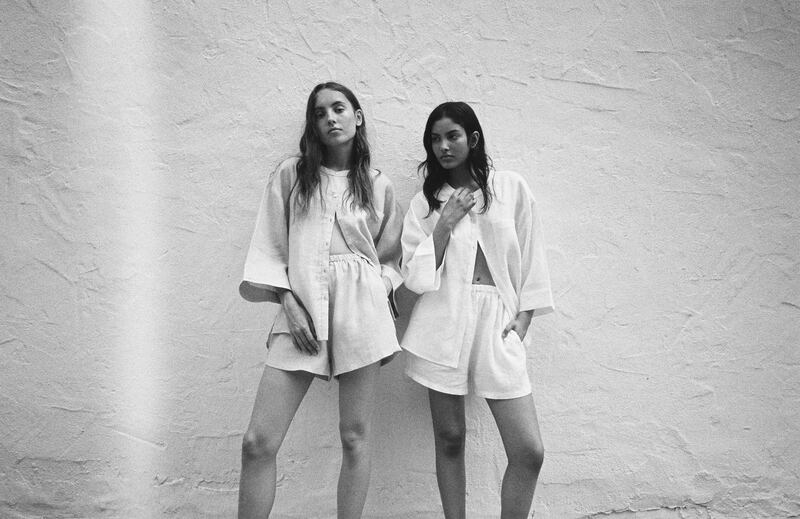Across the Middle East and its diaspora, a new generation of designers are melding Arab traditions with innovative ideas.
Palestinian American Suzy Tamimi fuses streetwear with age-old Palestinian embroidery, while Rasha Mansour is translating her love of Ancient Egypt into stunning jewellery pieces that are already celebrity favourites. Afghani weav ing techniques are applied to customised espadrilles, while Saleh Kelarge, a Syrian living in Spain, has translated his feelings of "otherness" is beautifullt crafted clothing.
Here are seven grassroots designers worth knowing about.
Suzy Tamimi
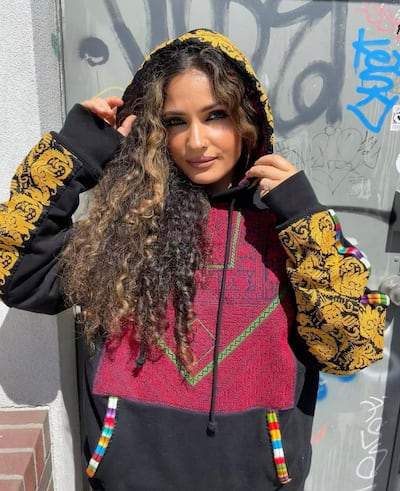
Suzy Tamimi is an American designer who is immensely proud of her Arab heritage.
“I am the daughter of two Palestinian immigrants who came to America in the 1970s. I have always been really passionate about my culture, but never felt Palestinians were represented anywhere. It was kind of lonely.
“I was 10 years old the first time I went to Palestine and I was heart-broken with what I saw. Even at that age, I could feel that something was seriously wrong. But why wasn’t anyone paying attention to it? Why was no one standing up for my people?”
Inspired by a dress her mother had made for her in Bethlehem, with traditional Palestinian embroidery on velvet (“I still have it,” she says), Tamimi immersed herself in the world of fashion and design, eventually landing in New York, working for the label threeASFOUR. “They are very avant garde, but what made me gravitate to them was that one designer is Palestinian and one is Israeli Jewish.”
Inspired to begin designing under her own name, a chance introduction paved the way for what her brand would become: American streetwear fused with traditional Palestinian embroidery.
“A friend introduced me to Hanan Munayyer, collector, curator and author of my favourite book, Traditional Palestinian Costume. She has a collection dating back more than 100 years. I went to her house and she asked if we would be interested in buying some embroidery remnants. I got to pick out what I wanted, and still have some chest panels I will not touch. I hold them like treasures — it’s not just fabric, it’s history and resilience. It says: ‘I am still here’.”
Moved by the connection to her heritage, Tamimi saw an opportunity to bring it to a wider audience. “I thought, why don’t I give new life to this fabric, so it doesn’t just sit in a bag? These are stories that need to be kept alive. That was the beginning.”
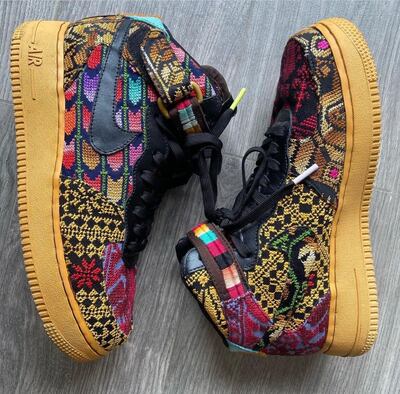
Now Tamimi has carved a name for herself, adorning streetwear with Palestinian embroidery, using motifs that stretch back decades and are often unique to one specific village. In a deliberate move, the collections are genderless. “Why can’t men wear Palestinian hand embroidery? I think everyone should be able to wear it, and it’s beautiful that people want to learn about Palestine, and who Palestinians are.
“My whole point is I can sit and cry about what is happening, but that’s not getting any attention, or create something beautiful, so people become curious and want to know the history behind it.”
Tamimi has even added the embroidery to trainers, creating one-of-a-kind footwear. “I had the idea for about seven years. I made my first pair of sneakers – the We Will Return shoes. They were multicoloured, and I couldn’t believe it when I saw them. I thought to myself: ‘How can anyone not love these shoes?’
“It’s a one of one, so we aren’t just throwing embroidery on top. We are deconstructing the entire shoe, and cutting all the patterns from scratch. The embroidery is glued on to vegan leather and then sewn on by machine and then by hand.”
Seemingly tireless, Tamimi is always trying to find new ways to support the women in Palestine who are still making this embroidery. “I work with refugee women in Jenin in Palestine, who are taking custom orders for people, that I initiated. It’s always been my dream to work with these women and empower them. It’s such a joyful thing to be able to create a financial future for them.”
Sentire Studio
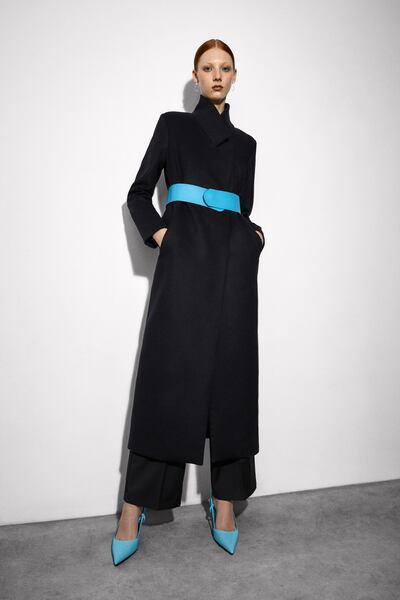
Sentire Studio was launched 18 months ago by Saleh Kelarge, a Syrian living in Spain. “The word sentire means to express, a form of self-expression, in Spanish,” he explains.
“I am from Aleppo in Syria and came to Europe when I was 13 or 14, when the civil war started. It’s been very hard for me to fit in and express myself.”
Despite more than a decade spent living in various countries across Europe, Kelarge has struggled to escape the prejudices that surround him. “There are always such misconceptions about Arabs and Arabic brands. Since I am from Syria, people pity me and put a label on me, because of the war. That’s why I have separated my personal life from the brand, so people just see my designs.”
With a clean, minimalist aesthetic, Kelarge’s style is closer to that of German designer Jil Sander, or old Celine, than, say, Elie Saab. And while battling preconceptions has been difficult, they have ultimately forced him to do things his own way. “It led to me creating my own path, to show the world this is what I can do,” he says.
When he initially launched his brand, people weren’t sure how to react to his sophisticated, understated creations. Now, three seasons later, he is pleased to see that attitudes are “starting to change, when they see the design, the craftsmanship”.
Uprooted by the war, Kelarge never had the opportunity to finish his education, so he is a largely self-taught designer. “Every time I applied to finish my education, I got rejected because I don’t have sufficient documents, so I had to learn everything about design, creating garments and craftsmanship from scratch,” he says.
“Everyone I work with is highly skilled. In the knitwear factory, for example, there are 60-year-old women making my pieces by hand. They have the skills to make it perfectly, inside and out. The whole point of my brand is high-end design and high-end craftsmanship.”
For Kelarge, design is not only about creating beautiful garments, but “about trying to find beauty in the everyday. That’s why I play around with details; each season I try to find a new collar or new buttons. It’s for people who see the beauty in simplicity.”
Despite everything he has been through and the racism he has endured, he is confident about the future. His greatest hope is to no longer be pigeonholed. “My label is for everyone and I think there is a small niche space for me to operate in. Working from both sides to form a bridge.”
Ellevens

At the age of 33, Saada Domloge already has two brands under her belt.
Born in Syria and raised in Abu Dhabi, Domloge launched her first venture, a jewellery line called Fabula, in 2015, with Darine Abu Salim, before venturing in a very different direction this year with a range of sunglasses called Ellevens.
For Domloge, the link between the two is entirely natural. “My obsession with jewellery and sunglasses started at a very young age. I used to dress up in my mother’s jewels and accessories, head to toe,” she says. Playing with handfuls of jewellery and piling on the sunglasses in her mother’s wardrobe triggered a fascination for both that she has never grown out of.
However, it was a search for the perfect pair of sunglasses that eventually led to her bringing out her own line. “I always looked for unique designs,” she says. Frustrated at not being able to find anything interesting and unusual, it dawned on her that perhaps she needed to do it herself.
She now offers unique styles named after celebrities such as Cher, Freddie, Madonna, Hadid and Lennon, which shift in style from edgy triangles with cut-outs, to lozenge shapes and diamante-encrusted cat-eyes.
What they all have in common is the four thin white stripes adorning the tip of the arm – which is the Ellevens signature.
Termeh
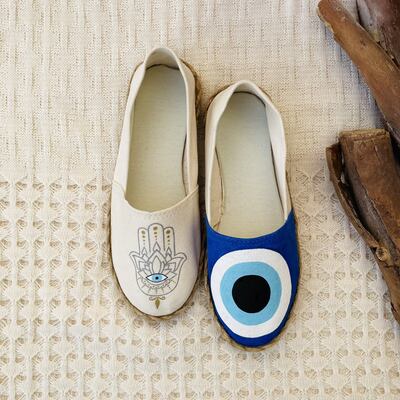
With its handmade, hand-painted Afghan shoes, Termeh is the very definition of an ambitious start-up. The brand launched only eight months ago, even though the concept was conceived earlier. “We had been meaning to do this for a while, but sorting out the supply chain and logistics, both within Afghanistan and from there to the UAE, took time,” says co-founder Neelum Nazir.
The concept of Termeh is simple: it sells espadrilles that are hand-painted, combining two distinct, artisanal skills. “A travel blogger friend came across a group of amazingly talented ladies on a visit to Afghanistan. They weave espadrilles and paint on clay pottery,” she says.
“The friend connected us to them and we shared a few designs to see if they could replicate the painting on shoe fabric. We were amazed. Not only did they paint with precision, they added their own artistic touches, and Termeh was formed that day. We wanted to do whatever it took to bring their creativity to the UAE,” Nazir adds.
Both co-founders – Nazir and Nessa Mohammad – are aware of the importance of supporting small communities. “Growing up in Karachi, I saw groups of Afghan refugees who fled war, leaving behind everything, just trying to make ends meet in a new country. Their stories stayed with me and I always had a soft spot for these people, for what they had endured. It was just our luck that we discovered these craftswomen, whose skill set deserves an international platform,” Nazir says.
“We are able to support them by financing the bulk purchase of raw material, enabling better rates, giving them access to better tools and supplies, providing better wages and giving their product access to international markets.”
Not only does every purchase help these women, clients can also customise. The shoes are available in three hues, but designs are varied. “People loved the idea of being able to create a bespoke pair of shoes. We get requests to customise shoes with personal messages or for special occasions.”
Rasha Mansour
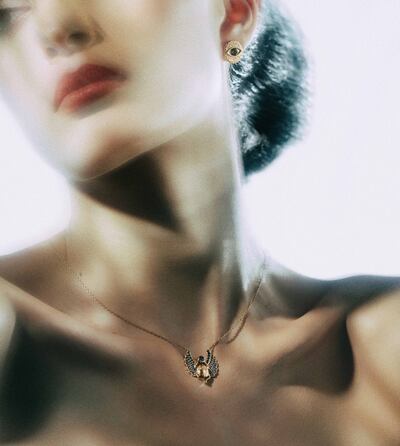
Rasha Mansour started her eponymous jewellery line during the pandemic, almost by accident. “I started this brand without knowing I was starting it,” the Dubai resident says.
“I was in a corporate job, and a friend and I went to a store and saw a piece of jewellery we liked, but it was insanely overpriced. We have a family jeweller who has been making our accessories for 20 years, so I said to my friend: ‘Let him make it for you.’ When she wore it, other friends all wanted one too.”
The piece in question was a map of Egypt, a nation that has fascinated Mansour for years. “I studied Egyptian mythology for 15 years, including the Book of the Dead and hieroglyphics,” she explains.
It sparked a desire to share her knowledge through jewellery. “I started creating, and then I couldn’t stop. In seven months I created 77 pieces.” These include rings, bangles, pendants and earrings, all made in precious stones and 18 carat gold because, as she notes: “Ancient Egypt shouldn’t be depicted in 6 carat gold.”
Symbols such as the Ankh and the lotus, which all carry rich meanings, feature in the pieces. The lotus, for example, represents rebirth and new beginnings, something Mansour fully relates to.
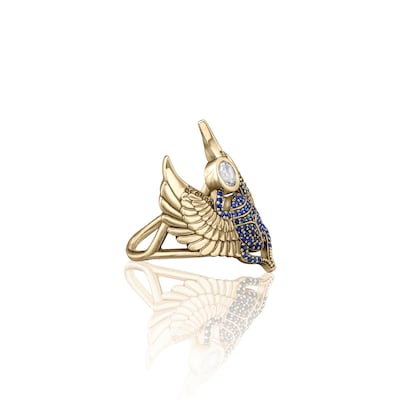
“For me, this has been something of a rebirth because with Covid, we all lost three years of our lives. The Ancient Egyptians spent their whole life preparing for death; this world meant nothing to them.”
While everyone knows about the riches of the ancient civilisation, Mansour also sees a lot of misunderstandings, such as with the dog-headed god Anubis. “People think he is evil, but he just guides spirits to the next life,” she says. Same, too, with the Book of the Dead. “I know it sounds sombre, but it’s not, it’s almost a guide to life. It’s beautiful.
“The Ancient Egyptians believed that when you died, your heart had to be lighter than a feather – this was one of the 12 rules of Ma’at, the goddess of the afterlife. What’s interesting is these rules are also in the Quran and the Bible. It’s amazing.”
With symbols such as a serpent head, Bastet the cat and the Eye of Horus, the brand is already attracting fans, including Egyptian actress Mona Zaki.
“She found me four months after I started. I gave her the ring I called Golden Parade, and she said: ‘How did you know?’”
Unbeknownst to most, Zaki was about to take part in last year’s Pharaohs’ Golden Parade, when Egyptian mummies were relocated from Cairo’s Egyptian Museum to their new home at the National Egyptian Museum of Civilisation. “It was a pure coincidence. And then she said: ‘What are we going to do for the Cairo Film Festival?’”
Second Summer
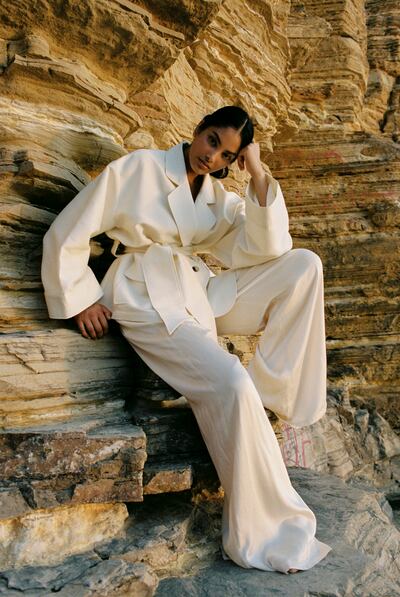
As the brainchild of Carmel Harrison, ex-editor of Emirates Woman and Elle Arabia in Dubai, it’s perhaps no surprise that clothing brand Second Summer is all about looking effortlessly bohemian.
Taking its cues from the summer vibes of Ibiza, the brand, like many others, was born during Covid. “I had had enough of magazines,” Harrison explains.
“I did fashion buying and product development at university and said to my sister: ‘I want to launch a summerwear range, will you do it with me?’ She is really good at logistics and finance – the opposite of me – and then my friend Amy, who has designed swimwear for 10 years, said she would love to be involved. It was perfect.”
Launching in 2020 with a tiny range, the fledgling label was an instant success. “We started with six beige linen pieces, and on the first day we made £10,000 ($11,880).”
The brand, which has recently introduced swimwear, is centred around season-less slow fashion inspired by the Balearic Islands. “We have been going to Ibiza for 15 years and have grown up with it. We used to go with friends and now we go with husbands and kids. It’s our place to escape. You are barefoot, in a sarong and carefree. I wanted the brand to capture that spirit – carefree and loose.”
Using only 100 per cent pure linen, and swimwear made with Oeko-Tex certified nylon that completely biodegrades in three years, this is conscious fashion at its best. Even the dyes used are eco-friendly.
Leaning into Harrison’s experience as a stylist, the collections are deliberately designed to be mixed and matched. “We do two capsule collections a year, and everything can be worn about ten different ways.
“Even when we shoot campaigns, we use pieces from previous summers, to help teach customers how to style it themselves. We call it the building blocks of a complete holiday summer wardrobe. You can take eight pieces of Second Summer on holiday and you have about 20 outfits. Even the swimwear can be worn as a top in the evening. That’s the ethos of the brand.”
With laid-back cuts and unfussy silhouettes, this is about minimal dressing for hot weather. With the women behind it all juggling full-time jobs, children and the label, Second Summer aims to keep things uncomplicated. And with stock about to be warehoused in Dubai for the first time, shoppers in the UAE can soon enjoy next-day delivery.
Atelier Bamboo
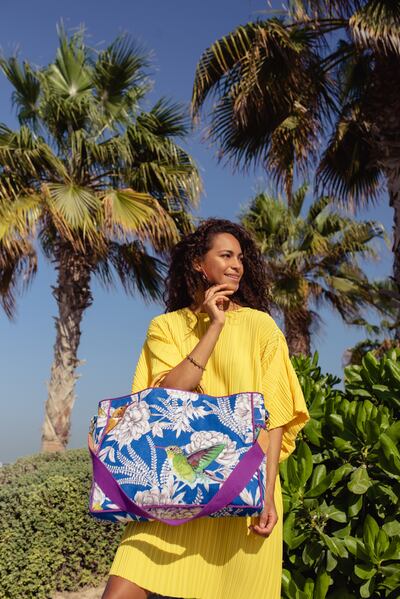
Atelier Bamboo is another small label with an unorthodox start. It was founded by Alexandra Tebay, a lawyer who divides her time between Abu Dhabi and Vienna, whose moment of epiphany came when she was looking for new curtains.
“I was renovating my apartment and looking for curtains, and was struck by this fabric of monkeys holding exotic umbrellas. I thought: ‘I can’t put that in a Vienna apartment, but I want it on a bag’.
“I knew exactly what it was going to look like, and that it had to have bamboo handles. Funnily, just next door was a shop selling bamboo handles. I called the tailor who was going to make my curtains and asked her to do a bag instead. She said: ‘Are you mad?’
“It was during Covid, so I had to ship everything to her and two weeks later, she sent the bag back. I had friends staying with me and they loved it and asked where I bought it. I called my tailor and told her she had two more clients. She said: ‘I swore to myself I would never do that again because it is so elaborate.’ It takes such a long time – 12 hours.”
It did not initially occur to Tebay that this could be a business opportunity. “I live in Abu Dhabi, where there is a certain resort lifestyle,” she says. It eventually dawned on her that she could contribute to that. The result is high-end, colourful bags in jaunty prints that are beautifully finished, and big enough to fit everything needed for the beach or a boat.
As someone who travels extensively and loves fashion (she also has a doctorate degree in sociology and fashion), Tebay knows her pieces are aimed at those who crave a story.
“My clients are art lovers who embrace uniqueness, not the mainstream. These are handcrafted, and you cannot buy them just anywhere.”
Despite being such a new brand, Atelier Bamboo is already sold in four countries – in the UAE, at Villa Yasmine, S*uce and O’de Rose, but also in the Seychelles, Cyprus and Lebanon.
Made to be practical, the sizes are generous. “One is really for resort and is 43 centimetres by 35cm, so you can easily fit all your beach things inside, or even a laptop. I made the small version because some women are more petite and wanted something less bulky. And then I have the pochette, in patterns like kimono flowers, that you can put a tablet in.”
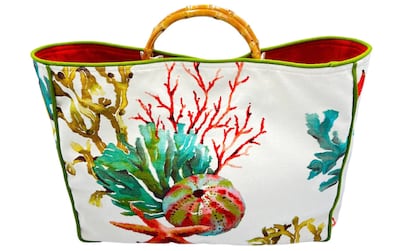
While inspiration for each bag comes from the fabric itself, Tebay is open to requests. “People are asking me to look for exclusive fabrics that embody their own fauna and flora. I do my research and buy things in collections or stumble across things at auctions online,” she says.
The bags are grouped into “voyages”, based on the fabrics. These include Aquatic Voyages, Botanic Voyages, Chinoiserie Voyages, Monkey Business, Exotic Voyage and Voyage Extraordinaire, inspired by the works of Jules Vernes. “When you create for women who dare to travel, to explore, you don’t want an ordinary day. When you travel you want something extraordinary to happen to you.”
What sets her pieces apart is the level of detail. While the final bags are stitched in Abu Dhabi, each element has been painstakingly sourced. The piping, for example, is from France, while the metal clasp connecting the strap to the bag is made in Italy.
“I am very particular,” Tebay says. “The strap is cotton from Germany and assembled in Portugal, and then shipped to me. I sit with my tailor and we cut the fabric for each bag together, which is why it takes 12 hours to make each one. It’s artisanal.”
